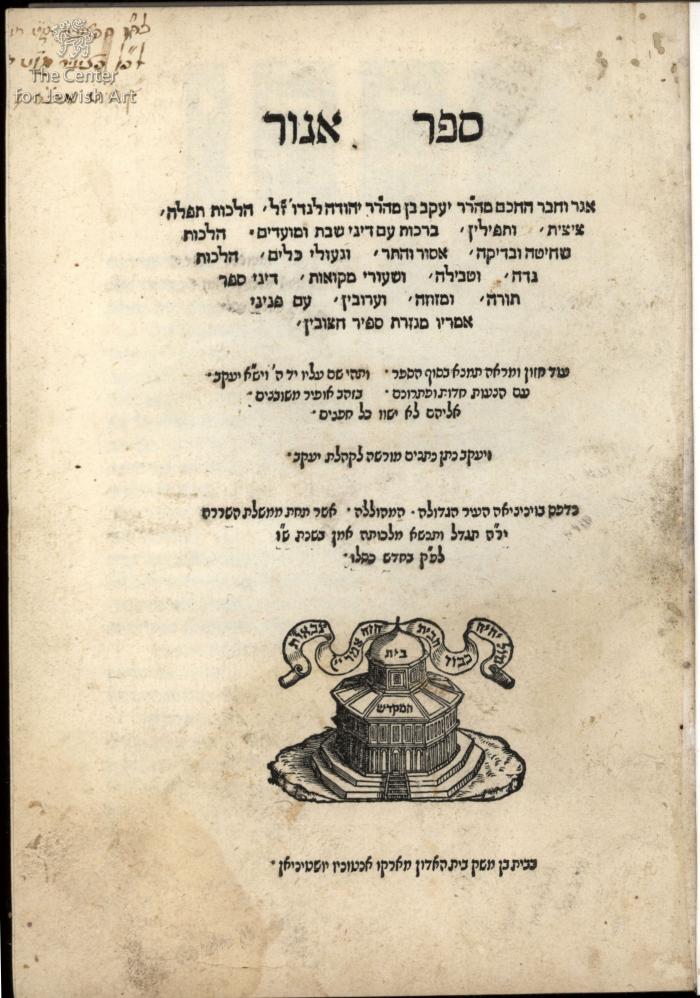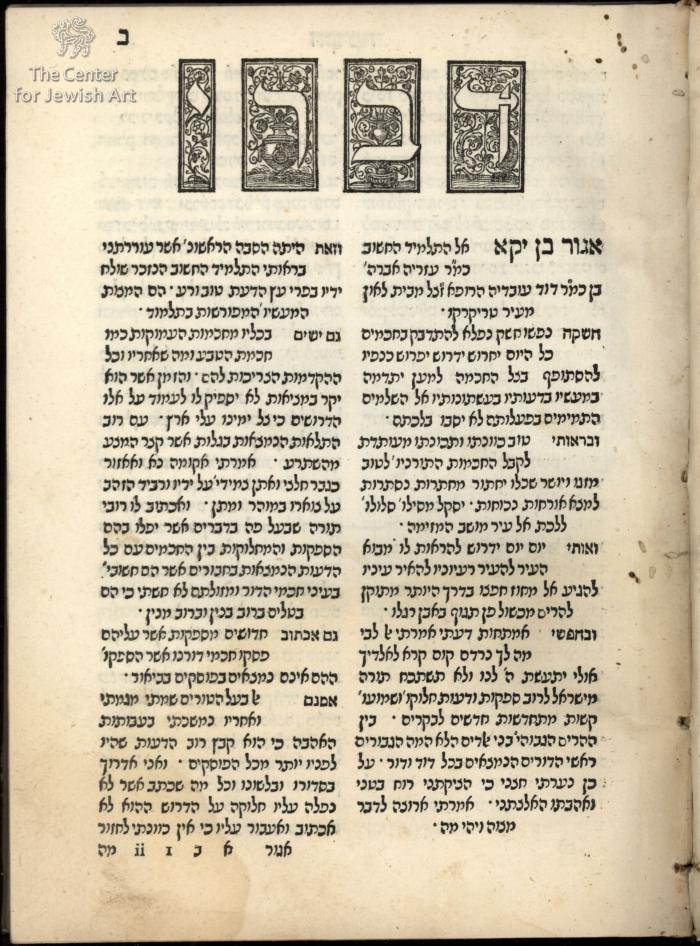Obj. ID: 37349 Sefer Agur by Ya'akov ben Yehudah Landau, Venice, 1546

sub-set tree:
This text was prepared by William Gross:
Sefer Agur, Laws and Customs by Rabbi Jacob Landau. Venice 1545-1546. Printed by Justinian. One of the basic books of laws and customs of the Ashkenazi rite in the time of the Rishonim.Without “Sefer Hazon” [4 leaves] which was added to some of the copies
One of the Hebrew presses in Italy was that of a wealthy and powerful Christian gentleman in Venice, Marco Antonio Giustiniani. He began printing important books in 1545, but ultimately published Hebrew books for only 7 years. His real importance for the history of Hebrew printing was his extremely intense rivalry with the Hebrew printing house of Alvise Bragadini. This personal competition of the two printers ultimately led to the papal decree of 1553 instructing the burning of all existing editions of the Talmud. Thousands of Hebrew books were burned in the public squares of Italian cities, bringing a disaster of severe proportions on the Jews of Italy. Hebrew printing was not resumed in Venice until 1563. This volume has a title page decorated with an illustration of the Dome of the Rock, marked in Hebrew "The Temple". This illustration served as the printers’ mark of the Giustiniani printing house. The use of the image of the Moslem monument , erected on the Temple Mount, to symbolize the holiest of Jewish sites was a regular feature of illustration in Hebrew printing from this time onwards for more than 300 years. The book, by Jacob ben Yehudah Landau of 15th century Germany and Italy, discusses aspects of medieval religious laws and customs.
Landau lived in the second half of the 15th century. His father was one of the chief authorities on the Talmud in Germany. Hundreds of Talmudists, among them his son, were his pupils. Landau left Germany and settled in Italy, living first in Pavia (1480) and then in Naples (1487).
In Naples, some time between 1487 and 1492, Landau published his code "Agur." He composed this for his pupil Ezra Abraham b. David Obadiah, because, the latter's time being devoted to physics and metaphysics, he could not enter deeply into the study of the Talmud (see introduction to Agur). This practical consideration determined the form of the Agur, which contains only those rules that a layman should know, and comprises principally an abridged presentation of the material treated in the first and second parts of the Turim. The author of the Turim, Jacob ben Asher, is Landau's chief authority, and the Agur may be considered really as a supplement to that work. In the Agur, Landau gives excerpts from the halakhic literature which appeared after the time of Jacob ben Asher.
Although the Agur possesses little originality, it held an important position among law codes, and is often quoted, especially by Joseph Caro in the Shulchan Aruch. German influence on the religious practices of the Italians was increased by Landau's work, such authorities as Jacob Mölin, Isserlein, and other Germans having been little noticed by Italians before him. The Agur was the first Jewish work to contain a rabbinical approbation, besides being the second Hebrew book printed during the author's lifetime.
At the end of the Agur, Landau gave a number of conundrums relating to halakhah, under the title "Sefer Chazon," which were afterward published separately (Venice, 1546; Prague, 1608).
244 pp.



